We Need Your Help!
As part of our efforts to catalog and publish the collection of the late Steve Scalzo, a collection which was donated to IRM by Mr Scalzo's widow, we have sorted and cataloged the sizable collection of photographic prints. (There are also thousands of slides that are part of the Scalzo Collection, and Ray and Julie Piesciuk have been working hard at scanning and posting them on the endlessly fascinating irm-cta.org website.)
As part of this effort, we have posted unidentified or "mystery" photos that are in the collection of prints. Please let us know via comment or direct email if you have information on the cars in these photos so that we can accurately classify and file them. Photos that have been identified are listed at the bottom of the page. Your assistance is appreciated.
Thank you to everyone who has contributed information.
All photos shown here are the property of the Illinois Railway Museum and may not be reprinted without written permission.
Admittedly, chances are slim that anyone will be able to pinpoint this one, but it's an engaging photo nonetheless, what with the guys in the mired wagon off to the side. "There's a muddy road ahead, detour..."
Here's a typical early GE steeplecab, unfortunately with no obviously visible lettering. My best guess is that this is Warwick Railway 100, but does anyone know for sure?
I'm not even certain what this is, much less where it is. It looks like some sort of derrick.
I have no idea on this engine house. There's no wire so it's likely not traction.
This thing is so ugly it's almost not ugly. Almost. Pretty obviously some industrial operation, so this could be especially hard to track down. And this is why you don't go nuts with the tension on your trolley base springs.
And here is an international photo that appears to show some sort of commuter rail.
This one says "German gas car" on the back; anyone know anything more about it?
This one shows a pair of cars coupled with Van Dorn tight-locks, and no electrical connections are visible so these are likely freight cars but it's hard to say. Those angled braces on the ends of the coupled cars might look familiar to someone.
There aren't too many clues in this interior photo of a classic interurban car. It's got rattan seats and dual sliding doors in the bulkhead, but that's about it.
This little critter is helpfully lettered "SHOP TRUCK" on the side. The sign on the building in the background is, unfortunately, not legible.
This crane has been adapted for snow-fighting with a plow cantilevered off the front truck. That neat cab has a very nautical, pilothouse look to me.
It wasn't terribly unusual to convert Birneys to work service but most didn't acquire a new I-beam underframe like this sand car did. John Myers has suggested that this car is from Tampa Electric - can anyone confirm?
No idea here. It's a McGuire-Cummings snow sweeper with an arch-roof car behind it and a Woolworth's 10 Cent Store off to the right, but none of that narrows it down very much.
Photos That have Been Identified
Thanks to a lead from an RyPN thread, this location has been identified as Lexington, Kentucky, at the Southern Railway depot. I'm still not certain of the date (looks like 1920s-1940s, maybe?) or why they had a "signal garden" there at the time.
I was able to solve this one years after posting it by perusing a page on this very site! This car is from the Altoona & Logan Valley and is pictured in the
Schmidt Collection A&LV page.
This is another old print adhered to heavy card, similar to the previously-identified photo (see further down on this page) of C&JE 252. It shows a single-truck work car numbered #55. This car's number and design match a contemporary roster description for C&JE #55, so while no other photos of that car have yet been found for confirmation, I'm going to say this is Chicago & Joliet Electric.
Wikipedia, of all things, to the rescue: this attractive California-style car is a Chicago grip car, and the image is from Street Railway Review, 1891.

Many thanks to Zach Ehlers for tracking down quite a bit of information on this one. The StL&G was the St. Louis & Gulf Railway, which only lasted from 1902 to 1904, so that narrows down the date of this photo pretty well. It was bought by the St. Louis Memphis & Southeastern, which was folded into the Frisco in 1907. StL&G 16, the Mogul shown here, was built by Dickson in 1882 and later became Frisco 397.

Here's one I was finally able to ID, because it turns out that other copies of this print were found elsewhere in the Scalzo files. It's car 114 of the Joliet & Southern, supposedly at the east end of the railroad in or near Chicago Heights though it's hard to say.

Believe it or not, I've actually been able to identify this one. The photo was taken in Springfield, Illinois and shows a horsecar crossing a trestle to the Lincoln Tomb in Oak Ridge Cemetery. The same photo was printed in the Springfield Sun on September 15, 1966 but that version was much darker, revealing that those little spots at center top are actually part of the obelisk atop the tomb. A copy of the version from the newspaper was included in Steve Scalzo's file on Springfield.
This one took quite a while to figure out, so a big thank you to Mark Sims for solving the mystery. The photo shows the first car owned by the Midlothian & Blue Island Railroad, which ran 1-1/4 miles from the CRI&P depot in Midlothian to the Midlothian Country Club. This car was acquired from Chicago Consolidated Traction in 1911 when the M&BI electrified.
The company name can't be read on the lower panel of this car, but it's a perfect match for a different photo in the Scalzo collection showing Joliet & Eastern car 52. So I'm going to call this as a J&E (a predecessor of the Aurora Plainfield & Joliet) car.
This is Springfield, IL and this Birney is passing the Illinois State Capitol building on the right. Springfield's Country Club line, for which this car is signed, did indeed run down 2nd Street past the capitol.
I'm not absolutely certain but I suspect strongly that this is a Veracruz open car, and that it's very likely car 6. The photo looks "museum-y" to me, with rebuilding work apparently being done in a metal-clad building. The car is a single-truck (note the springs attached to the side sill) arch-roof open car, an unusual thing to begin with, and the post and step support spacing matches Veracruz practice. The only Veracruz cars I know to have been this heavily disassembled during the preservation era are 001, which was rebuilt in Mexico, and car 6, which was disassembled at the Texas Transportation Museum in the 1960s or 1970s.
Thanks to Richard Schauer, who has identified this trolley bus as a Duluth Superior Transit Brill-built T40 from the DST 1-9 series.
This photo was included in the Scalzo 4x6 print collection in an unidentified state but, as luck would have it, a larger print of the same image was included in the Scalzo 5x7 print collection and this time was identified. It turns out that this shows Decatur, Illinois streetcar 37.

Many thanks to Charlie Lowe of the New York Museum Transportation, a New York State Railways expert if ever there were one, for identifying this car as NYSR Utica Lines car 906 in the yard at Forest Park, near Utica. Thanks also to Joel Salomon for reaching out to Charlie on this one! Charlie writes about car 906: "Note the short tower on the roof; this car was being used as a line car. But, originally, it had been one of four Rochester and Sodus Bay freight motors. These were ordered in 1899 from Jackson and Sharp, and numbered 90-93. About 1906 or so, once R&SB and Rochester Railway Co. (1890-1909) had been purchased by New York Central, the Sodus freight cars were renumbered 903-906, but we don't know if they were renumbered in order. Jackson and Sharp issued shop numbers on the basis of one per car, so we lost which shop number went with each car when they were first renumbered. Car 906 was transferred from Rochester to Utica in 1918 [Receivers' Report, 12-31-30, p. 79]. At some point, maybe in the 1920s, the folding tower was added to the roof. This was not unique for NYSR; R&E work car 0, later renumbered 0205 and even later Rochester Transit freight locomotive 0205, had a folding tower in the late 1920s. Car 906 was scrapped in 1940, just before the end of all street railway operations in Utica (last full day was May 12, 1941)."

Thanks to Anthony Tieuli, who IDed this car as being a Fort Wayne, Indiana single-truck car, and to David Wilkins for confirming that.
Many thanks to Stephen Cobb, who has identified this international photo Johannesburg, South Africa. On the back of the print it says "Crown Mines on Market Street, looks like EMB trucks, the first design of the 'streamliners.'" The fleet number is #2.
Stephen Cobb also IDed this one as Heidelburg, Germany.
Many thanks to Bill West for identifying this international photo as "Plauen, Oberer Bahnhof, the upper station in the town of Plauen, Saxony." The photo is dated 5.10.1991.
Thanks to Olin Anderson for confirming that this is indeed the incline in Chattanooga, Tennessee.
Olin Anderson also confirms that this photo was taken in Lisbon, Portugal. The main identifying feature of Lisbon vs Oporto cars seems to be arch roofs in Lisbon, deck roofs in Oporto.
And Olin Anderson also points out that this is indeed Chicago, looking east on Cermak at the bridge over the South Branch of the Chicago River. Olin writes "the track crossing the street is a CB&Q freight branch that still exists along the street and is turning on to Lumber St. The bridge is still there and and I believe the buildings still stand. The building on the left was (is?) a work-live loft building when I knew it, and it was featured in a scene of an overturning fire truck in 'Backdraft.'"
Thanks to
Walt Stafa for pointing out that this is Monongahela West Penn 654, formerly City Lines of West Virginia 654. According to
Don Ross it was homebuilt in 1921 and retired in 1947.
Zach Ehlers confirms that this is, indeed, Rome (Italy, not New York). It's a 1949-vintage articulated PCC.
Zach Ehlers wrote in to say that this is Mexico City on the metro system there and that Line 8 opened in 1994.
Thanks to David Wilkins for identifying this as Hershey Transit 28, a utility work car.
David also figured out that this is Cook Transit 300, a freight motor that was used on the surviving stub of the Evansville & Ohio Valley. It would have run alongside the GE steeplecab that was scrapped two years ago in Noblesville.
David Wilkins also IDed these two photos as having been taken at the Keokuk Dam, which had an electrified railroad across its length and used a cab-on-flat work motor now preserved in Mt. Pleasant, IA.
Many thanks to Charles Sontag for tracking this one down. It's the Rochester Syracuse & Eastern, in a photo that appears in the CERA bulletin "TravElectric" credit to Brill Magazine.
I was finally able to track this one down, again using the CERA "TravElectric" book. It's Auburn & Syracuse car 61, the only car of this design on the A&S so hard to ID unless you have a photo of this exact car. It was built by Cincinnati in 1907.
This photo was identified as Chicago & Joliet Electric 252 because it happens to also be on
Dave's Rail Pix. The print is old, adhered to heavy card stock in a manner that leads me to believe it was probably printed pre-Depression.
It looks like this is a Chicago & Interurban Traction car based on
this photo from Dave's Rail Pix. It may have even been taken at the exact same location, though the car looks slightly different (headlight vs no headlight, for example). Note that there are two wires like you'd see on a gantlet track; maybe a double-track line went down to a gantlet track at this bridge? Anyway, it seems that C&IT cars of this series were later sold to CSL and rebuilt as 5651-5665 series cars like
this one.
Thanks to Paul Schneble for identifying this as a Dallas Railway & Terminal work car. He writes that this car "was built in 1913 and served until the city's last streetcar lines were abandoned in January 1956...DR&T's post-World War II, diamond-shaped logo is visible on the side of the cab." The photo is credited in an Arcadia book on McKinney Avenue streetcars to Walter H. Veilbaum, McKinney Avenue Transit Collection.
Elsewhere in the Scalzo Collection photos I happened upon a different photo of a car identical to this one numbered 215. That photo was also unidentified but the emblem could clearly be made out: C&J. Sure enough, this is a Chicago & Joliet Electric car.
And this is also a Chicago & Joliet Electric car, of a slightly different design but definitely with the same emblem.
Many thanks to Zach Ehlers for solving this extra-difficult international version of the challenge. This car is from Walthamstow, a borough of London. Eight of these cars were built for Oldham in 1902 and later spent time in Rotherham before going on to Walthamstow. The system was taken over by the LPTB in 1933.
Zach Ehlers also IDed this photo as Bloomington Pontiac & Joliet 201 "Dwight." The photo was taken in Pontiac at the corner of Main Street and East Madison with the car northbound on Main. It's a rarity, as there aren't too many photos of this somewhat eccentric little line.
Thanks to Mark Sims, who identified this as Des Moines Railway 59, a homebuilt crane car.
Curve-sider 44 is a car from the Stark Electric in Ohio.
This car must be a Cincinnati Newport & Covington car, probably a 500-series car; it matches
this photo right down to the "spitball" herald and odd box up on the lower deck of the roof. Judging from the double overhead over the track in the foreground, I'm guessing this is Cincinnati.
This car has been IDed as Philadelphia & West Chester 17, matching the photo shown
here. The older P&WC interurban cars like this were replaced by low-level but higher-speed equipment like the 80-series cars and Brilliners, I believe.
The lettering on that overpass is barely legible in the original but looks like it says Stony Island. I'm pretty sure this is the 63rd & Stony Island station on the South Side 'L'. At first I thought the 'L' continued into Jackson Park in this photo but it does look like the structure just goes over the road, ending (as it did for many decades) over the east sidewalk.
Fellow blogger David Wilkins has identified this as St. Louis Public Service 615 at the Museum of Transport in St. Louis. In the background can be seen CB&Q 9908 "Silver Charger."
David Wilkins also IDed this as the SLPS sprinkler car at the Museum of Transport.
This is confirmed to be
Tulsa Sapulpa Union Railway 201, a box motor built by American in 1918. That seems like quite a lot of bracing just to put the trolley hook further out along the pole, but what do I know?
This is almost certainly the Waterloo Cedar Falls & Northern, probably car 102, which was popular for fan trip use. The observation platform railing matches
this photo precisely. Anyone know what wye this might be?
Thanks to Bill West, who tracked down evidence that this Taunton plow is on the Androscoggin & Kennebec in Maine.
Thanks to T Rich, who suggested that this is Randolph Street Station, and to Dick Lukin, who confirmed that and wrote the following:
It is of the Randolph Street station throat looking Southward from a train on Track three! The furthest track to the west is track ONE and is a short stub of a track and used only for special moves or temp storage for a few hours or so. I worked there for the IC as a trainman for three summers and Christmas vacations. The IC hired about 15-20 guys for summer work back in the 1950s. Vacations for permanent employees were mostly in the summer, rarely in Winter....PLUS the IC suburban service had about 6 or 7 train sets of 8 cars for Washington Park Race track service, thus they needed, say, 6 engineers off the engineers' seniority board, 6 conductors, and about 20 other trainmen off the extra board. Lots of fun working these extras, you never knew what to expect.
There were NO single one way tickets ever sold to Wash Park.... one could buy only a round trip ticket as most of the riders lost their ass and had NO money with which to buy a return ticket. On most hot days, the crew would open the windows on the west side of the cars, and lower the shades to reduce somewhat the heat in the cars which were sitting in the sun all afternoon. When most of the races were over, a lot of the men did not take the time to enter the cars through the doors, but climbed into the car from the open windows. Oh Well.
Stephen Karlson and C Kronenwetter have identified this as Fond du Lac Station in Milwaukee looking west towards 35th Street.
Mark Sims has correctly identified this as a Des Moines Railway car. Good find!
Thanks to Pete Pedersen with supporting info from C Kronenwetter for identifying this as Wisconsin Public Service 26 in service in Green Bay, Wisconsin.
This photo has been identified as Rochester & Eastern freight motor 925. The photo happened to show up in the
April 2020 "Headend" newsletter posted on the New York Museum of Transportation website, which identified the car and specified the location as the Rochester interurban union freight terminal at State Street Station, today a Kodak parking lot. It also says that the photo was probably taken by William G. Amer.
Freight motor 406 ran on the Oneida Railway, part of the NYSR Utica Lines. This line used third rail and was known for a couple of unusual traits: first, it had a pair of "Windsplitter" interurban cars built in 1912 by Kuhlman; and second, it was an Oneida Railway interurban car that made the famous long-distance interurban trip all the way from Utica to Louisville, Kentucky in 1910, traveling the entire distance on interurbans and nearly the entire distance under power.
Car 32 ran on the Mohawk Valley interurban line, a component of NYSR Utica Lines that extended from Utica through Rome to Little Falls. This car was built in 1911 by Kuhlman.
This is another photo on the Mohawk Valley line out of Utica, taken in 1925 between Utica and Rome. The car on the right, car 40, was built in 1913 by Kuhlman. The lightweight cars later used on the Rochester Subway were built for this line in 1916. This photo appears in Sheldon King's NYSR book credited to Barney Neuberger.
Trailer 1114 was used in city service in Rochester. It was built by Kuhlman in 1913.
A builder's photo of trailer 1111, built in 1913 by Kuhlman for use on the Rochester Lines of NYSR.
Car 1019 is a Rochester Lines NYSR car built by Kuhlman in 1913. It is shown in 1940 on Dewey Avenue in northwest Rochester at the NYC - B&O crossing. This photo appears in Sheldon King's NYSR book credited to Barney Neuberger.
Car 1023 is part of the same series as 1019 shown above and, like 1019, would have been assigned to NYSR Rochester Lines. It's most likely shown at Seneca Park in Rochester.
Car 1062 was used in Syracuse on the NYSR city system there. It was built in 1916 by Kuhlman.
Car 1084 was also used on the NYSR Syracuse Lines. This photo shows it at Wolf Street Loop on the "last day," January 4, 1941. This photo appears in Sheldon King's NYSR book credited to Barney Neuberger.


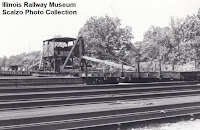


















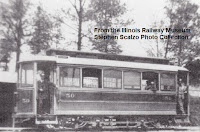












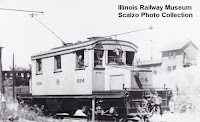










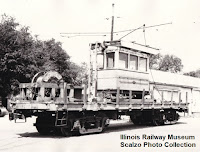













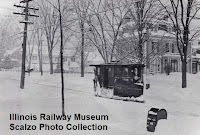















The second photo appears to be part of the Green Bay-De Pere line. Definitely not Milwaukee! Walnut Street is a major East/West Street through the City of Green Bay.
ReplyDeleteThere is a photo of car 26 (in Green Bay) in Badger Traction and a similar photo of car 29 on the book cover.
ReplyDeleteC Kronenwetter
First photo looks like an early Des Moines(IA)Street Railway car. Either an early homebuilt car, or one rebuilt from Horsecars.
ReplyDeleteSecond photo looks like IC Randolph Street Station.
ReplyDeleteT. Rich
I think photo #1 is the Milwaukee Fond du Lac car station looking West toward 35th St.
ReplyDeleteC Kronenwetter
Concur with C. Kronenwetter, that first photo is the Fond du Lac car station in the transition to trackless trolley era, looking over the brick wall along Fond du Lac.
ReplyDeleteStephen Karlson
Snowplow 1006 -I think you have a lead with Androscoggin & Kennebec. I don't know if that was a guess on your part or if have already looked at these sources but Trolleys to Brunswick, Maine -- 1896-1937 , pg.41 has an A&K plow numbered 1018. Then "Narcissus 1912 Renovation Project Saturday, March 7, 2020" , 5th picture has a plow numbered _006 that sure looks like your 1006 picture. I didn't try to digest these 2 sites to sort out the corporate name changes and the maps of the towns served but doing so might lead to matching that background mansion to present day street views (a Google drive around Bowdoin College in Brunswick was unsuccessful). One of the stories mentioned record snowfalls about 1919 or 1920.
ReplyDeleteThanks for the ongoing photo treats, Bill West
Crane #59 posted on 11/26 is certainly home built by the Des Moines (IA) Railway.
ReplyDeleteThe 10th one down - the "Difficult" bogie car certainly looks like one from the UK.
ReplyDeleteThe small lettering on the right end of the bottom panel apears to read "General Manager" followed by a name, which would fit with UK pracice.
It could say "xxx Corporation Tramways" at the other end but it's too small to make out.
An enlargement of the crest below the centre window framing would help in identification!
S.J. Cobb
Paul Schneble writes:
ReplyDeleteRegarding the mystery photo of the cab on flat with a diamond emblem, that exact photo appears in the Arcadia book McKinney Avenue Trolleys page 38. The caption says, "This Dallas Railway & Terminal work car was built in 1913 and served until the city's last streetcar lines were abandoned in January 1956...DR&T's post-World War II, diamond-shaped logo is visible on the side of the cab." - The photo is credited to Walter H. Veilbaum, McKinney Avenue Transit Collection.
The "ugy" 102 hopper car appears to be at a mine, there are some cranes lower right.
ReplyDelete-Hudson
I wonder if the 2nd photo isn't some sort of track laying train? Maybe some sort of rolling rail welder?
ReplyDeleteC Kronenwetter
The incline photo is indeed Chattanooga. The photo that follows is Portugal, and it is Lisbon and you wondered. A car just like this one burnt the past week in Redlands, CA, making a Brill truck available. The Chicago photo after that is a view east on Cermak Rd. at the South Branch Chicago River drawbridge. The track crossing the street is a CB&Q freight branch that still exists along the street and is turning on to Lumber St. The bridge is still there and and I believe the buildings still stand. The building on the left was (is?) a work-live loft building when I knew it, and it was featured in a scene of an overturning fire truck in "Backdraft."
ReplyDeleteO. Anderson
And I believe we have pictures of a preserved incline car of this type at the bottom of this post:
ReplyDeletehttps://hickscarworks.blogspot.com/2015/10/visit-to-tennessee-valley.html
Planen, Oberer Bahnhoff is actually Plauen, Oberer Bahnhof, the upper station in the town of Plauen, Saxony.
ReplyDeleteBill West
Photo 6 - Double deck car #2 is in Johannesburg, South Africa.
ReplyDeletePhoto 8 - Looks like Heidelburg, Germany, from the colour scheme.
Stephen Cobb
Might be useless information, but the catenary style of photo #8 - "And here is an international photo that appears to show some sort of commuter rail" looks remarkably Italian. Their overhead construction is fairly distinctive and also applies to other countries that were once under Italian influence i.e. Slovenia.
ReplyDeleteBeyond that, as I've never been to Italy, I can't comment further!
Stephen Cobb.
Hey Frank- Regarding the fourth photo (at present), indeed that "DST" trolley bus is from Duluth-Superior Transit. DST seemed to have no need to make coach numbers easy to discern, and often just put them on one upper sash window on the street side. That said, it's a Brill, of the T40 model; they had ten of them. This would be comparable to our CSL 84 and Indianapolis Rys. 568.
ReplyDeleteR. W. Schauer
Uh, sorry, numbers 1 to 9 make nine of them, not ten. My mind's off for Christmas!
ReplyDeleteR. W. Schauer
Photo number 13 the single truck car in front of the building with the interesting roof line is the same photo in the CERA book "Smaller Electric railways of Illinois" page 5. They say Midlothian & Blue Island RR.
ReplyDeleteMark Sims
It might be possible that the (current) unidentified photo is of a variant of a McGiffert log loader. There is a single-boom self-propelled McGiffert log loader at the Lake Superior Museum of Transportation in Duluth. According to their posted info, nearly 1,000 of them were built by the Clyde Iron Works in Duluth for use in logging operations throughout North America. Three are known to be preserved.
ReplyDeleteMike Gorecki
Mike: Please do not publish information like this on a public forum. Nick will want us to get one.
ReplyDeleteBut seriously, that's an excellent suggestion!